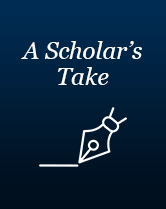
Entrapment and Racialization: The “Homegrown” Canard
A new report out today from New York University School of Law’s Center for Human Rights and Global Justice (CHRGJ) describes how American counterterrorism efforts have singled out Muslim Americans by “sending paid, trained informants into mosques and Muslim communities.” The report finds that some 200 terrorism-related prosecutions have relied upon informants, resulting in plenty of convictions that have been proudly trumpeted as hallmarks of a successful counterterrorism program — one that requires sending informants into Muslim American communities. Recently, however, questions about police entrapment have become more urgent. CHRGJ speaks with former FBI agents, lawmakers, and advocacy organizations who all worry that the police are creating their own “homegrown” terrorism plots, “foiling” them for the cameras, and sending Muslim Americans to prison. This report arrives at a very timely moment, as a controversy over a “sting” operation like those described in the report is unfolding right now.
Last week, there was yet another deadly terrorist plot foiled by counterterrorism forces – or so the press release says. Undercover investigators allegedly caught two young Muslim American men plotting their attack. The suspects went so far as to purchase what they thought was a hand grenade, surreptitiously supplied by the police in a “sting” operation. Shortly after the New York Police Department (NYPD) arrested the two suspects, the mayor of New York City held a press conference at City Hall. Mayor Michael Bloomberg said that these two men “wanted to destroy a major synagogue in Manhattan.” Later at the same dramatic news conference, the NYPD Police Commissioner, Ray Kelly, added that one of the prospective terrorists also “expressed interest in bombing the Empire State Building.” The dramatic press conference generated a huge amount of media attention. Large photos of the two suspects appeared in several newspapers. CNN and MSNBC each ran a story on the disrupted plot. And at least one local television news in New York thought the story deserved two reports – one on the press conference and a separate interview with Commissioner Kelly.
At first, this preventative counterterrorism case and the media frenzy around it looked much like several similar stories that have unfolded in recent years. Undercover police informants hang out with Muslims and eventually “discover” (or perhaps help to create) a deadly terrorist plot. Law enforcement then enables the wannabe terrorists to procure what they think are real weapons – because such procurement demonstrates intent. An arrest is made, followed by a triumphant press conference. Top officials congratulate themselves on keeping our citizens safe. And the terrorism suspects are almost always Muslim Americans.
This case in New York was different in a crucial way, however. Several news reports mentioned that the FBI’s Joint Terrorism Task Force – which usually works together with the NYPD in cases like this – was conspicuously absent from the press conference. WNYC, the public radio station in New York, dug into the story and got two Federal agents to speak (anonymously, but on the record) about the alleged synagogue plot. These federal officials say that the NYPD’s case is “over-hyped,” according to WNYC, and they expect that the terrorism charges won’t hold up in court. Lawyers for the two men agreed with the anonymous FBI agents that the allegations are false.
The very public disagreement between the two law enforcement agencies disrupted the usually tidy media narrative about “homegrown,” Muslim American terrorism, disrupted by vigilant and effective surveillance. Suddenly, messy notions of entrapment and false accusations targeting stigmatized minorities started to seep into the mainstream discussion.
The CHRGJ report arrives at exactly the right time to impact this discussion. The report gives ample evidence that Muslim Americans have specifically been targeted for these counterterrorism “sting” operations. The reason why law enforcement has focused on Muslim Americans is clearly due to the racialized stereotype that Muslims are more likely than other people to become “radicalized.” This despite a recent study that shows more non-Muslim than Muslim terrorist plots since 9/11. Another study concludes that media attention to alleged Muslim American terrorism plots gives the impression “that Muslim American terrorism is more prevalent than it really is.” Still, as the CHRGJ report shows, law enforcement, and politicians like New York congressman Peter King still single out Muslim Americans.
The targeting of Muslims both results from and contributes to the ongoing racialization of Arab, Muslim, Sikh, and South Asian Americans as dangerous, threatening outsiders. The CHRGJ report describes the direct impact that the “sting” operation policies and practices have on the families of the alleged terrorists sent to prison. The impact of these “sting” policies is even greater when you factor in the indirect costs that come through increased hate crimes and discrimination affecting not only Muslims but those who look Muslim. The CHRGJ report gives several specific policy recommendations that would reduce the use of undercover informants that target Muslim American communities. These recommendations will likely prove prescient, as more stories like the latest “synagogue bombers” from New York continue to swirl in the media. As for the two accused terrorists, if their lawyers plan to say that the police illegally entrapped their clients, they face an uphill battle. The entrapment defense has not produced an acquittal in even one of the 156 post-9/11 terrorism prosecutions identified by the NYU Center on Law and Security.
Erik Love is an ISPU Fellow and an Assistant Professor of Sociology at Dickinson College in Pennsylvania.
This article was published by Jadaliyya on May 18, 2011. Read it here.
ISPU scholars are provided a space on our site to display a selection of op-eds. These were not necessarily commissioned by ISPU, nor is their presence on the site equal to an endorsement of the content. The opinions expressed are that of the author and do not necessarily reflect the views of ISPU.


